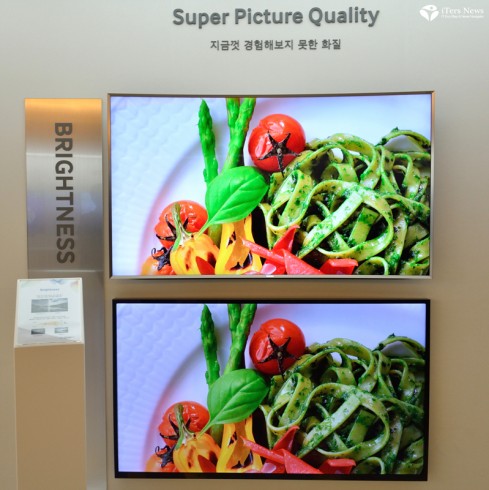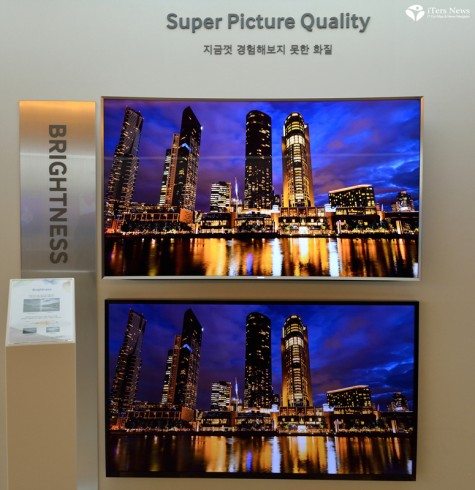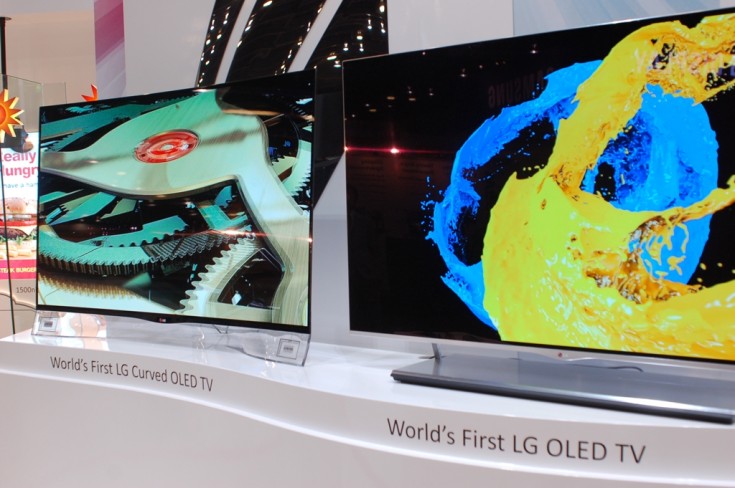(iTers News) - The world’s two largest TV makers Samsung Electronics and LG Electronics are butting heads in the battle to control the hotly-coveted and most lucrative premium segment of global TV market.
The duel is also part of a tug-of-war between the two companies to stay ahead in the race for setting a standard for a next generation of TV display technology.
Both of the two companies have been working on commercialization of true RGB OLED TVs, as they have been looking for a next wave of growth catalyst to revitalize years-long idle TV demand. .
Shying away from true RGB OLED TV, however, Samsung is betting on quantum dot TV, while LG is turning to WRGB- type OLED TVs
The two companies’ respective diversion to quantum dot and WRGB-type OLED TVs speaks of how tough technology challenges they face in commercializing true RGB OLED TVs. This also implies that quantum dot and WRGB OLED TVs will risk ending up being a stopgap before the true RGB OLED TV hits mass-market.

Samsung Electronics pulled the trigger for the standard-setting war. Following the debut of quantum dot TV series at CES 2015 held in Las Vegas from Jan. 6-9 in what’s branded as SUHD SUHD, the world’s largest TV maker started peddling the quantum dot TV series effective from Feb. 5 in Korea.

He said that the rollout of the SUHD TV series is the cusp of Samsung’s efforts to consolidate the leadership in the premium TV market segment, adding that about 30% of Samsung’s yearly TV production usually goes to the most lucrative market segment.
As 4K UHD picture quality is increasingly becoming the norm on the advanced TV market, we need top-tier premium product line-ups to differentiate ourselves from others,” he stressed.
The quantum dot TV technology is a variant of conventional LCD TV, not a discontinuous disruptive TV technology like true RGB OLED TVs.
What makes differences with conventional LCD TVs is the squeezing of the nano-crystal-based quantum dot film layer between the light source of the backlight units and LCD backplane.
Unlike traditional LCD TVs that use white LED chips as light source, quantum dot TV comes built with a blue LED chip-based backlight system, and the quantum layer convert the blue color into pure green and red light, expanding the range of color that it can produce.
The upshot is that reds are deeper, and greens get far brighter, rendering life-like colors. Accordingly, its color gamut, a measure of how many colors it can produce, is in the neighborhood of 100% of NTSC, compared with 70% to 80% of conventional LCD TVs.

This means that display makers can create a highly optimized display that produces the exact wavelengths of red, green, blue light, a requirement for optimal color and energy performance. The result is a display that’s brighter, more energy-efficient, and incredibly vibrant.
When asked about why Samsung named the quantum dot LCD TV as SUHD, president Kim said, “The SUHD TVs are not all about quantum dot technology, but it come built with other crucial technologies like HDR, or high dynamic range as well as a re-mastering picture quality engine.”
The re-mastering picture quality engine is a technology to adjust the display for the color alignment schematics of the original contents, not only improving contrast ratio, but also analyzing picture image brightness and then making dark image a lot darker. It results in 2.5 times higher brightness than conventional LCD TV.
Yet, the SUHD TV series come dearly with the 65-inch and 55-inch fetching for US$7,800 and US$5,000.

The world’s second largest TV maker is lining up its 7 new WRGB OLED TVs from 55-inches to 77-inches, declaring the 2015 as the breakout year for the mass rollout of the self-luminescent TV technology.
The full line-up plan represents LG’s ambition to make still pricey WRGB OLED TVs the mainstay of global premium TV markets by luring consumers with its crystal-clear, life-like picture quality, while others are still tinkering with some variations of conventional LCD TVs like UHD and quantum dot TVs.
LG’s WRGB OLED TV is a sort of variation of a true RGB OLED TV. Unlike the true RGB OLED TV that comes with no RGB color filter sheet, it stacks a RGB color filter sheet on a grid of self-lighting white OLEDs. Accordingly, it is inferior to true RGB OLED TV in picture quality, underperforming it in color representation, brightness and response time.
True enough, true RGB OLED TVs are a sort of disruptive display technology, a discontinuous innovation from current LCD TV technology that threatens to make all other display technologies obsolete.

It is self-lighting emitting red, green and blue colors coming with no backlight and color filter sheets. As with the case, it costs less theoretically than LCDs to produce.
In reality, however, it is still an expensive luxury, as its manufacturing technology is so premature that it fails to reach mass-production stage. As it is still painfully touch challenge to pattern and deposit tones of microscopic individual RGB cells uniformly and evenly, OLED panel makers are suffering poor yield – the ratio of marketable items vs. total production.

